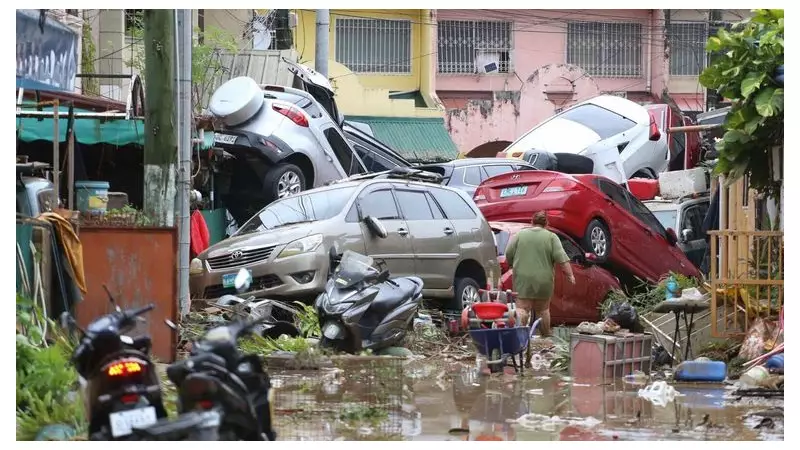
The Philippines is reeling from another devastating natural disaster as Typhoon Kalmaegi, known locally as Typhoon Luis, has carved a path of destruction through the northern regions of the country. Rescue teams are working against time in perilous conditions to reach communities cut off by what officials are describing as the worst flooding in recent memory.
The Human Cost of Nature's Wrath
Official reports confirm the death toll has risen to at least 26 individuals, with fears this number could increase as emergency services reach more remote areas. The storm's relentless rainfall transformed streets into raging rivers and turned neighbourhoods into isolated islands, catching many residents completely off guard.
Among the heartbreaking statistics are at least five children whose lives were cut short by the storm's fury, highlighting the vulnerability of the youngest members of affected communities. The Philippine National Police have been deployed in force, coordinating with local disaster agencies in a massive search and rescue operation.
Northern Regions Bear the Brunt
Ilocos Norte province has emerged as one of the hardest-hit areas, with rescue teams navigating chest-deep waters to evacuate stranded families. The coastal communities, while accustomed to seasonal storms, were unprepared for the sheer volume of water that Kalmaegi dumped in such a short timeframe.
Local officials report that emergency shelters are filling rapidly, with many evacuees arriving with only the clothes on their backs. The rapid onset of flooding gave residents little time to gather essential belongings, creating an urgent need for basic supplies including food, clean water, and medical assistance.
Infrastructure in Ruins
The storm's impact extends far beyond immediate flood damage. Critical infrastructure including roads, bridges, and power lines has suffered extensive damage, complicating relief efforts and leaving thousands without electricity. Agricultural lands have been submerged, dealing a devastating blow to local farmers already struggling with economic challenges.
Emergency response coordinators emphasise that the full extent of the damage may not be known for days, as many areas remain completely inaccessible due to floodwaters and debris-blocked roads.
A Familiar Threat With Growing Intensity
The Philippines, situated within the Pacific's typhoon belt, faces approximately 20 tropical storms each year. However, climate scientists note that recent years have seen an increase in both the frequency and intensity of these weather events, posing ever-greater challenges for disaster preparedness and response.
Typhoon Kalmaegi serves as a stark reminder of the nation's vulnerability to extreme weather phenomena, coming just months after other significant storms tested the country's emergency response capabilities.
International Response Mobilises
The international community has begun coordinating support efforts, with neighbouring countries and global aid organisations preparing to deploy assistance. The focus remains on immediate life-saving measures, with longer-term recovery and rebuilding efforts expected to take months, if not years.
As rescue operations continue through the night, the people of the Philippines demonstrate remarkable resilience in the face of yet another natural disaster, though the psychological and economic scars will undoubtedly linger long after the floodwaters recede.





